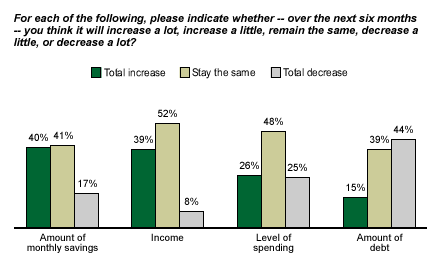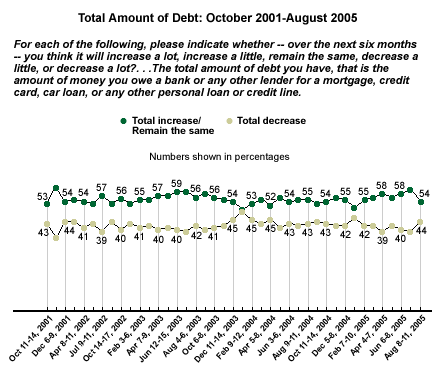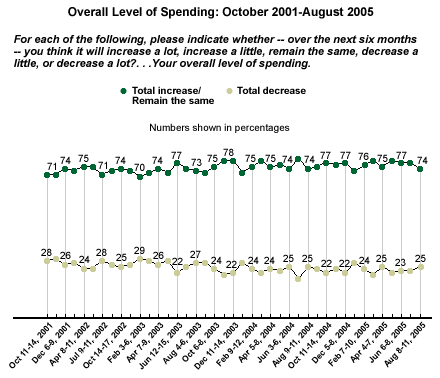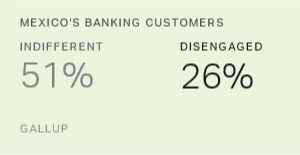The American economy, it would seem, is firmly on the mend. Double-dip recession worries are a thing of the past, and analysts are making optimistic forecasts for third-quarter growth. New home sales touched record highs last month as mortgage rates hover near a 40-year low, and job growth continues at a steady pace.
Despite this progress, Americans remain as unenthusiastic about national economic conditions as they have been since late 2003, perhaps in part because gas prices continue to rise. Slightly more than one in three say current economic conditions are excellent or good, and a majority of Americans continue to say economic conditions are getting worse rather than better.
But is the good news affecting Americans' decisions about their personal finances? Data from an Aug. 8-11 Gallup Poll* shed light on the saving, spending, and borrowing intentions of the American consumer.
Despite Stagnant Income, Americans Plan on Steady Spending
Lackluster income growth has been one of the great disappointments of the recent economic recovery, and with global outsourcing as an option to drive down labor costs, it is not surprising that 60% of Americans report their incomes will stay the same (52%) or edge lower (8%) in the next six months. Thirty-nine percent expect their incomes to increase during this period. Aside from a few peaks and valleys, this percentage has stayed in the 40% range since October 2001.

The data also show a significant percentage of Americans say they intend to beef up their nest eggs and reduce their debt burdens -- 40% say they plan to increase their amount of monthly savings and 44% say they plan to reduce their amount of debt in the next six months. Ever since Gallup began asking these questions in 2001, about two in five Americans have expressed an intention to reduce their level of personal borrowing in the near future. Years later, that number has not changed much. The majority of Americans say they will maintain their debt levels or increase their borrowing over this period.

Most U.S. consumers are not planning to curtail their spending -- about three in four (74%) believe that their level of personal spending will remain the same or increase in the next six months. Consumer spending currently accounts for 70% of the nation's gross domestic product. Since 2001, despite stock market setbacks and a jobless recovery, consumers' spending intentions have changed little and they haven't tightened their wallets. This reality might change if, and when, the low-interest-rate party ends and the great property market speculation turns out to be yet another asset bubble past its prime.

Bottom Line
The U.S. economy has relied heavily on consumer spending to work its way out of some nasty turns in the business cycle. And Gallup data suggest consumers have no plans to change their spending habits in coming months. How long this happy arrangement can continue is anybody's guess.
*Results are based on telephone interviews with 1,001 national adults, aged 18 and older, conducted Aug. 8-11, 2005. For results based on the total sample of national adults, one can say with 95% confidence that the margin of sampling error is ±3 percentage points.
